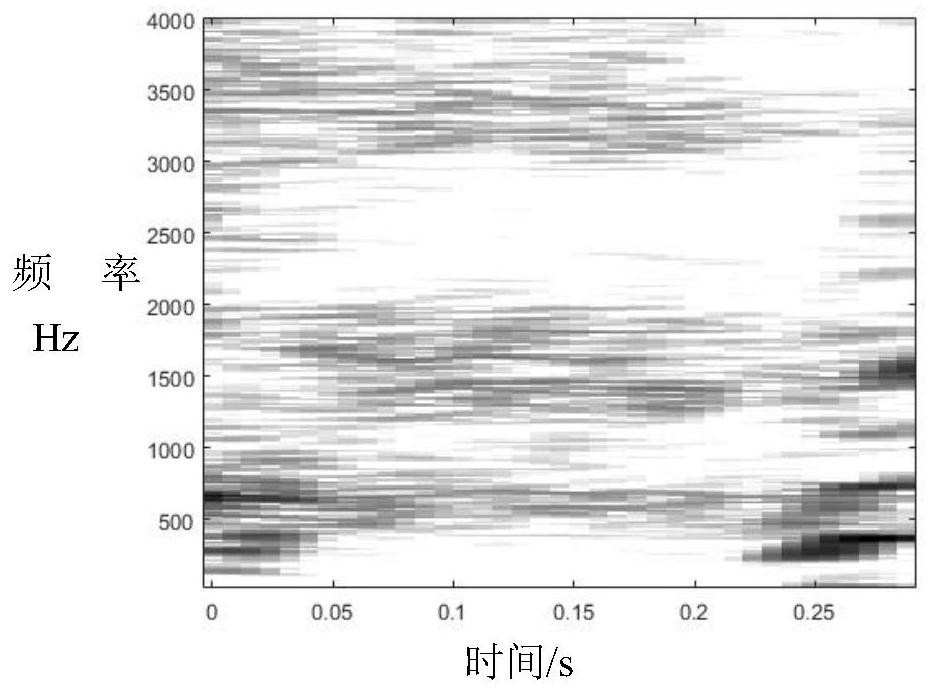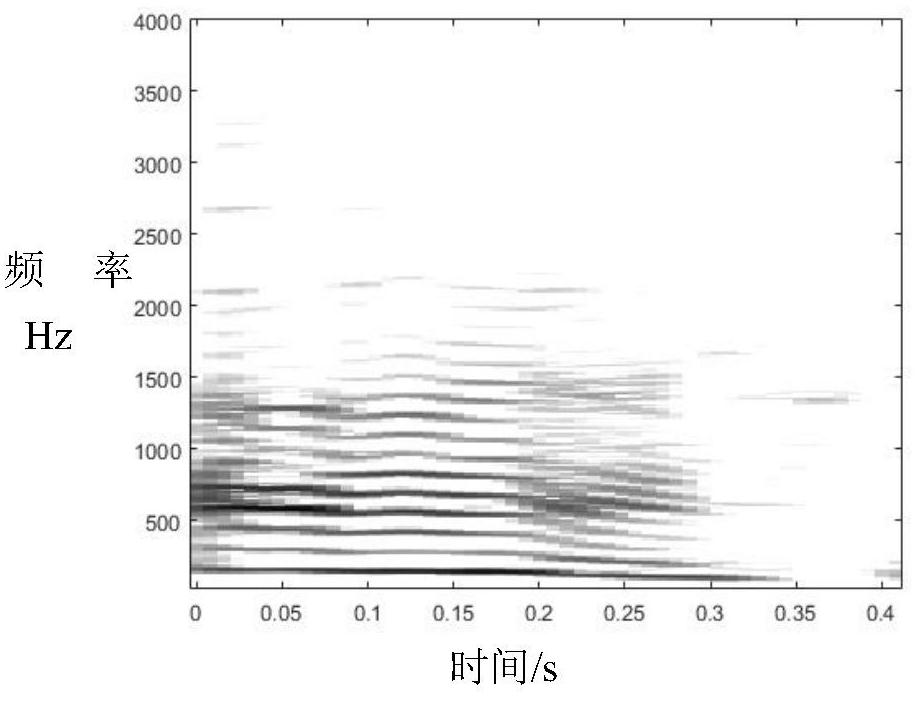Linear classification algorithm, medium and device for true and false cough sounds in patients with cervical spinal cord injury
A spinal cord injury and linear classification technology, which is applied in speech analysis, medical science, diagnosis, etc., can solve the problems of evaluation, limited number of cough sound samples, difficulty in establishing a real and fake cough recognition model, etc., and achieves low requirements for hardware implementation. Small amount, easy to achieve effect
- Summary
- Abstract
- Description
- Claims
- Application Information
AI Technical Summary
Problems solved by technology
Method used
Image
Examples
Embodiment 1
[0051] The present embodiment is a linear classification algorithm for true and false cough sounds of patients with cervical spinal cord injury. Several unvoiced samples and voiced samples are obtained, and the initial segment sequences of the unvoiced and voiced samples are intercepted and filtered; Autocorrelation coefficient; establish a linear classifier based on the zero-crossing rate and the maximum autocorrelation coefficient, and use the unvoiced samples and voiced samples as sample sets to train the linear classifier; use the trained linear classifier to identify patients with cervical spinal cord injury True cough and shout-type pseudo-cough.
[0052] Its workflow is as figure 1 shown, including the following steps:
[0053] The first step, with f s For the sampling frequency, m unvoiced samples and m voiced samples are collected respectively, and the length of each sample is N and the duration is The sequence of unvoiced sequence x i (k) and the voiced sequence...
Embodiment 2
[0103] A linear classification algorithm of true and false cough sounds for patients with cervical spinal cord injury in the present embodiment, the workflow is as follows Figure 5 shown, the difference from the first embodiment is: in this embodiment, the first step is to use f s Collect m unvoiced samples and m voiced samples for the sampling frequency, respectively perform endpoint detection processing on each unvoiced sample and voiced sample, and then intercept the length N and the duration from the start time after endpoint detection. The sequence of unvoiced sequence x i (k) and the voiced sequence y i (k), where i=1,2,...,m, k=1,2,...,N, and m, N are positive integers;
[0104] Step 9, with f s Obtain the sample to be tested for the sampling frequency, perform endpoint detection processing on the sample to be tested, and then intercept the sample with a length of N and a duration of The sequence of is s(n), where n=1,2,...,N, N is a positive integer;
[0105] T...
Embodiment 3
[0107] This embodiment is a storage medium, wherein the storage medium stores a computer program, and when the computer program is executed by the processor, the computer program causes the processor to execute the true or false of the cervical spinal cord injury patient described in the first embodiment or the second embodiment A linear classification algorithm for cough sounds.
PUM
 Login to View More
Login to View More Abstract
Description
Claims
Application Information
 Login to View More
Login to View More - R&D
- Intellectual Property
- Life Sciences
- Materials
- Tech Scout
- Unparalleled Data Quality
- Higher Quality Content
- 60% Fewer Hallucinations
Browse by: Latest US Patents, China's latest patents, Technical Efficacy Thesaurus, Application Domain, Technology Topic, Popular Technical Reports.
© 2025 PatSnap. All rights reserved.Legal|Privacy policy|Modern Slavery Act Transparency Statement|Sitemap|About US| Contact US: help@patsnap.com



